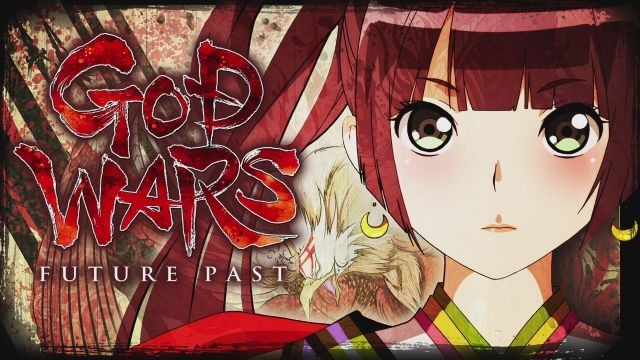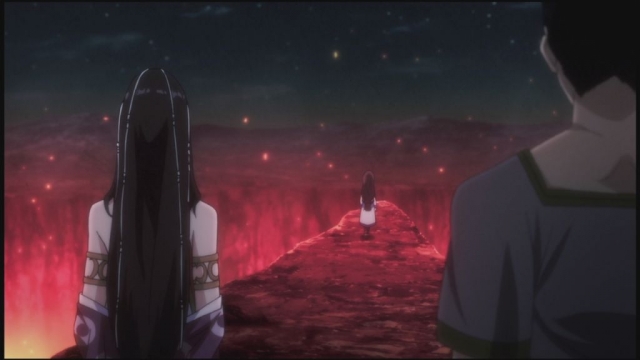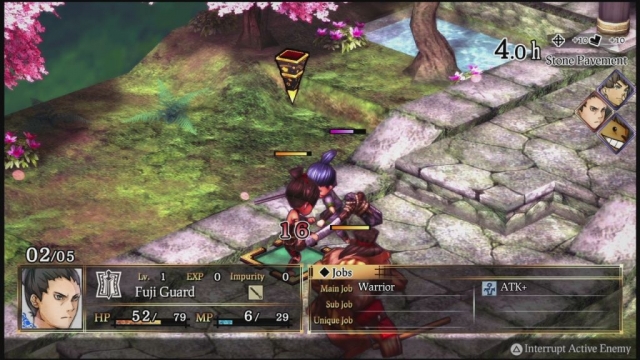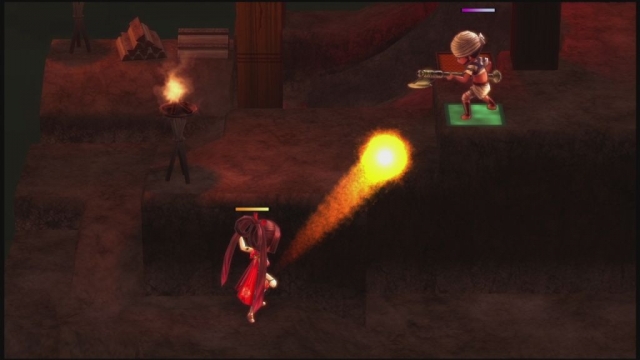God Wars: Future Past

God Wars: Future Past has one of the darkest openings of any game on a tonal level. A goddess sacrifices her daughter in lava to appease the angry gods. She embraces Sakuya one last time before she disappears amidst the flames. Thirteen years after the sacrifice, we see that her other daughter Kaguya has been given the same fate – but is confined to a shrine for her protection. Her friend Kintaro comes to rescue her and that is where things truly begin – he battles her theoretical protectors in order to truly save her life. He does so and allows her to see the world she has had hidden from her.
What unfolds after that is a touching story that blends a feudal-era Japan with mystery and curses. It’s a strange blend, but one that leads to a lot of intrigue and a surprising amount of drama. Eventually, your party grows to include new allies and some former enemies – and even after a fearsome battle, you grow to see the many perspectives of this war. Some fight simply to protect their families, while others fight to uphold the pride of their group. God Wars is far more story-driven than most strategy RPGs and it manages to find a nice pace where you gradually learn about the characters and then go into battle.
This gives you an attachment to the characters before each battle and I found that it made me want to play better. Many SRPGs rely on just giving you a slew of characters, but only offering up a story for a few. God Wars actually does give most playable characters some depth – at least for the human characters. Your super-powerful, non-human characters like Kuma the bear aren’t given much, and the same obviously goes for enemies like deer and dogs who aren’t going to have a personality that can translate to a game beyond pure viciousness.
The core SRPG action is exactly what you would expect, with some neat wrinkles mixed in for the overall format. You still pick your characters before battle and choose whether they’ll be in the front lines or support. As usual, going with your powerhouses up front, to absorb and deal damage, while healers staying back, is safe. However, this game’s job system gives you enough flexibility to have a healer also be a valuable asset to the party on the battlefield if you lose a powerhouse. This kind of versatility makes each battle a challenge in a different way and it allows you to play with the structure of a fight if you so desire.
Being able to play as a healer and then try them out as an offense-heavy character for smaller battles makes the game seem so much more freeform. So many games like this give you a rigid structure, but having a robust job system that lets you tinker with the characters and maybe not make someone who will excel at everything, but be effective in a variety of roles on a battlefield, is outstanding. During the game’s first major boss battle, I struggled to move forward and it was because I was sticking to a rigid structure.
Instead of playing the game like it can be played, I played it like a typical SRPG – and it was to my own detriment. Once I started playing the game to its fullest potential, the game started to truly click beyond simply the storyline. The story itself is great and the core gameplay is fun and does require some strategy to survive, let alone excel. By using a character that would normally be a healer as a long-range fighter, I was able to whittle down the goon squad that could really do some damage with poison arrows – and with the costly nature of revival items and spells, it’s best to keep characters in play as long as possible instead of relying on those to keep things going.
The usual grid-based mechanics are at play, and knowing exactly where to place your troops is the key to victory. Keeping short-range fighters in the back is a surefire way to die, and you’ll need to plot things out at least a couple of ideal moves ahead to succeed. If you’re lucky, you can make up for a bad move with an enemy attack missing – but that is rare and not something you can really count on to save you. Fortunately, the game does guide you through the ins and outs of things fairly well – so newcomers to the genre won’t find themselves in over their heads.
Visually, God Wars is a mixed of great and bland. The actual backgrounds are fairly detailed, but don’t look any better than something you might see on the PS2. Similarly, the character models look a bit cheap and instead of sprites, use somewhat super-deformed characters on the battlefield. Their scale is a bit off and it looks like a bunch of weird action figures on-field at all times. Whereas games like Final Fantasy Tactics blended sprite art nicely with their backgrounds, the characters in this world don’t quite gel together naturally – and it’s a bit off-putting. Spells are also incredibly bare-bones, and it comes off like the game wasn’t given much of a budget to work with.
Fortunately, God Wars features an outstanding soundtrack. It’s incredibly relaxing with a lot of woodland instruments and it perfectly evokes the pre-industrial Japan vibe the game is going for. The voice work is fairly good and everyone who is given a voice role does a solid job, with some of the jokier characters like Kuma working in very short doses when needed. The sound effects for spells and attacks are pretty good, with fire sounding fairly damaging and things like clubbing blows giving off a reasonable-sounding thud to get across the damage done.
Overall, God Wars: Future Past is a well-crafted strategy RPG that manages to be both fun for veterans of the genre and newcomers. Its robust job system allows you to experiment freely with different character types and makes what would otherwise be trial and error into a fun task. It’s a solid-looking game overall, but definitely has some visual shortcoming when it comes to the character models. The sound design as a whole is strong though, and the game itself is perfect for anyone looking to get into SRPGs, or for lapsed fans of the genre.
Reviewed By: Jeremy Peeples
Publisher: NIS America
Rating: 88%
——————————————————————————–
This review is based on a digital copy of God Wars: Future Past for the PlayStation 4 provided by NIS America.
 Game Over Online
Game Over Online











